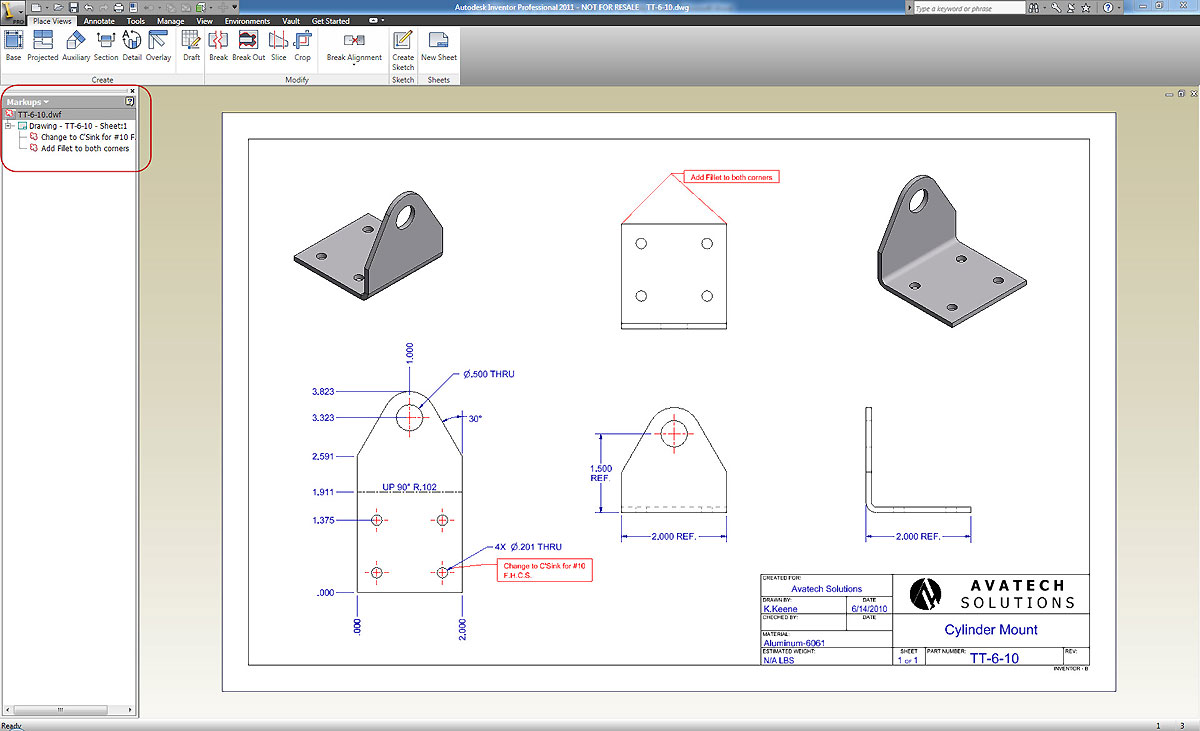

- AUTODESK INVENTOR TUTORIAL PART 2 HOW TO
- AUTODESK INVENTOR TUTORIAL PART 2 PATCH
- AUTODESK INVENTOR TUTORIAL PART 2 SOFTWARE
- AUTODESK INVENTOR TUTORIAL PART 2 FREE
Get Started with Fusion 360 Part 3 - (VIDEO 7 mins 45 secs) Continuing with Part 2's lamp design, how to create the shade and the cord with various sculpt tools as well as sketching tools.
AUTODESK INVENTOR TUTORIAL PART 2 PATCH
Get Started with Fusion 360 Part 2 - (VIDEO 8 mins)Continuing from where Part 1 left off, walks through how to sculpt the neck of the lamp using edit form, as well as patching up the body using patch tools. Get Started with Fusion 360 - Part 1 (VIDEO 6 mins 41 sec) - walk through on how to sign into Fusion 360 and start designing the base of a lamp design Tour of the User Interface (VIDEO 8 Mins 24 Sec) - Learn how to configure and customize Fusion 360’s UI so it works based on your own preferences and common workflows.
AUTODESK INVENTOR TUTORIAL PART 2 SOFTWARE
After an introduction to the software and user interface, time is spent learning how to navigate, changing workspaces, sketching, primitive modelling and finally making edits/changes. WEBINAR CONTENT Autodesk Fusion 360 for Beginners - (VIDEO 50 mins) In this section we cover both Fundamentals and Quick Tips to get you to a standard that won't hold you back in the class room environment should you decide to proceed to the next level.In this session, intended for those who are completely new users of Fusion and 3D design, the basics of Fusion 360 are covered.
AUTODESK INVENTOR TUTORIAL PART 2 FREE
Select the blocks that you wish to include, notice that although “NEW BLOCK 101” is used several times, it is only converted into one new part.Learn Autodesk Fusion 360 from Free online video tutorials or book training at one of our Authorised Training and certification centres. To do this, click on Make Components (on the Layout Tab, under Manage). This will allow you to create parts from the individual blocks and let you bring your mechanism to life. Your Sketch block mechanism can now be converted into an assembly. This gives you the ability to add constrains between blocks and in doing so, create mechanisms. You can now place this block into your sketches, as outlined in Part 2.Īt the end of Part 1 I mentioned that the dimensions would disappear when the blocks are created, you may also notice that although the geometry contained within the block is still fully constrained, the block itself is movable and can be rotated as well. You do not need to be in a sketch to copy a sketch block, simply expand the Blocks folder, and then right click on the block you wish to copy and select Copy. You can now go into any part and right click and select Paste. This will create a new Blocks Folder (if one doesn’t already exist) and will place the block into this folder, as shown below. One of the features of Sketch blocks is that you can re-use them between parts by copying and pasting them from one part to the next, you can even keep specific sketch blocks saved in your template files. When you finished the edit, you can click on Finish Edit Block to exit the block editor. To Edit a Sketch block, simply right click on the block in the browser and select Edit Block, this can also be achieved by right clicking on the block in question.

In the image below, you can see that I have created a nested block which contains a nested block (Vertical Arm, which contains Cadline Logo), as well as New Block 101. It’s worth noting that you can nest blocks, what I mean by this, is that you can include a mix of sketch geometry and multiple blocks in your newly created blocks, this will create a nested block. Right click on the block you wish to place and select Place Block, this will place the block at the end of your cursor (on the insertion point you chose earlier), click anywhere on the sketch to place the block. To place a sketch block into your part, you will first need to be in a sketch. Your dimensions are accessible when editing the blocks (see Part 4).

You will also notice that the block can be moved around and rotated and that its dimensions have disappeared. Your Block will now appear in the model browser, nested under the Blocks folder. Click OK and you now have a sketch block. Then select the lines that you want to include in the new block, it’s a good idea to name the block and give it an insertion point (this will make placing it easier later). In any Sketch, you can simply click on Create Block from the Layout tab. To keep things simple, let’s break Sketch blocks down into 7 easy parts: The functionality works in a similar manner to AutoCAD, but in Inventor you are able to do so much more.

One of the often-overlooked tools in Inventor is the Sketch block (added in around the Inventor 2010 release).


 0 kommentar(er)
0 kommentar(er)
